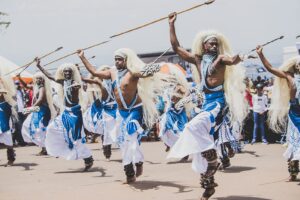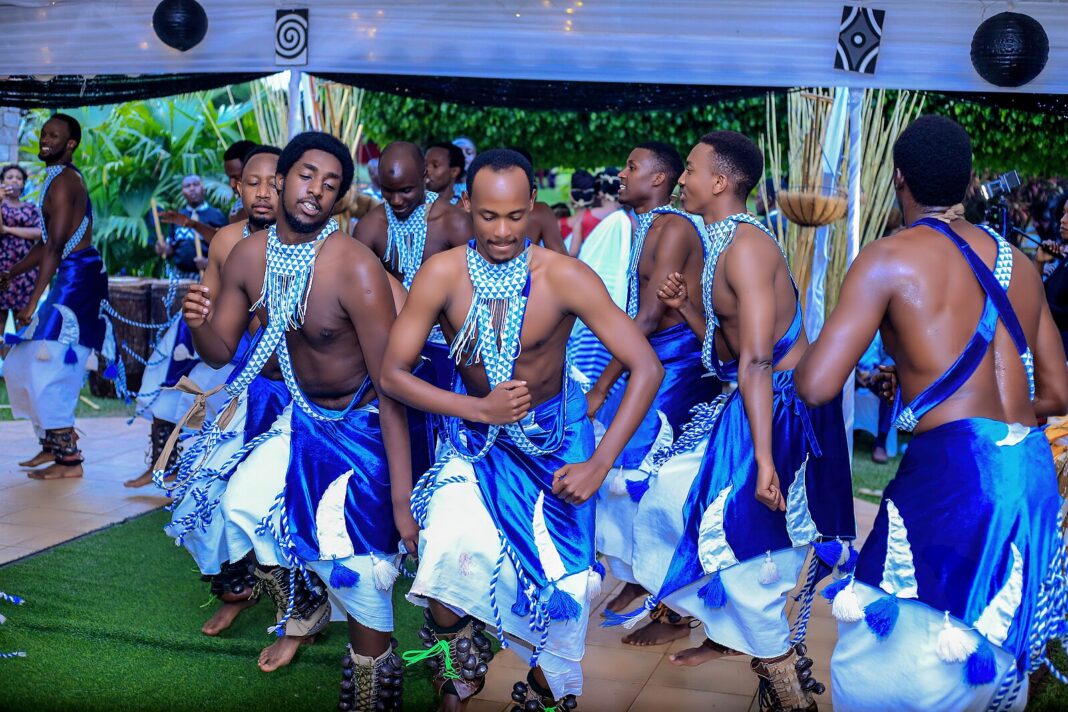The Enigmatic Guhamiriza Dance: A Window into Rwanda’s Rich Cultural Tapestry
In the verdant hills of Rwanda, where the landscape is as rich as the history, a mesmerizing cultural expression known as the Guhamiriza dance thrives. This traditional Rwandan dance is not just a series of movements; it is a profound storytelling medium that connects the present with the past, the individual with the community, and the physical with the spiritual. The Guhamiriza dance embodies the essence of Rwandan heritage and offers a vibrant glimpse into the nation’s soul.
Guhamiriza, which translates to “to welcome” in Kinyarwanda, has deep roots in Rwandan culture. It originated as a ceremonial dance performed to welcome guests, particularly during significant events like royal gatherings, weddings, and community celebrations. The dance reflects Rwanda’s agrarian society, where hospitality and community cohesion were crucial for survival and prosperity.
Historically, Rwanda’s kingdom era, which lasted from the 11th century until the late 19th century, was marked by the prominence of such dances. They were not only a form of entertainment but also a method of preserving and passing down stories, traditions, and values. The Guhamiriza dance, with its emphasis on welcoming, symbolized the open-heartedness and unity of the Rwandan people.
The Guhamiriza dance is a visual and auditory feast. It is characterized by its fluid, graceful movements that mimic the natural world and everyday life. Dancers, adorned in traditional attire, move in unison, their bodies telling stories of welcome and celebration.
Costumes: Dancers typically wear traditional Rwandan attire. Men are often seen in ‘amashanana,’ flowing robes paired with headbands, while women wear elegant, vibrant dresses known as ‘imishanana.’
Instruments: The dance is usually accompanied by traditional instruments like the *ingoma* (drum), *inanga* (a type of lyre), and sometimes, the *umuduri* (a musical bow). These instruments set the rhythm and mood, enhancing the storytelling aspect of the dance.
Choreography:
Welcoming Gesture: The dance starts with a welcoming gesture, often performed by one or two lead dancers who extend their arms, inviting guests to join in the celebration.
Circular Movements: The dancers move in circular patterns, symbolizing inclusivity and the cyclical nature of life and community.
Synchronized Steps: Precision and harmony are crucial, reflecting the collective spirit and unity of the Rwandan people.
The Guhamiriza dance is more than just entertainment; it is a repository of cultural values and social norms. Each movement and musical note carries deep symbolism, representing themes like hospitality, unity, and respect.
Hospitality:
At its core, Guhamiriza celebrates the Rwandan tradition of hospitality. The dance is a physical manifestation of the warmth and openness extended to guests, embodying the spirit of ‘Ubumuntu’ – a term that signifies humanity and compassion.
Unity and Community:
The synchronized movements and group formations highlight the importance of community and collective identity. In a society where every individual plays a role in the larger community, the dance serves as a reminder of the strength found in unity.
Respect and Hierarchy:
Traditionally performed for royalty and distinguished guests, the dance also underscores the Rwandan respect for hierarchy and authority. The careful and respectful movements during the dance reflect the social structure and reverence for leadership.
Modern Revival and Global Influence
In recent years, the Guhamiriza dance has seen a resurgence, not just within Rwanda but also on the global stage. Efforts by cultural groups and the Rwandan government have been pivotal in preserving and promoting this dance as a key aspect of national identity.
Cultural Festivals and Performances:
Guhamiriza is now a staple at cultural festivals, national celebrations, and even international events. Troupes like the “Ballet National Urukerereza” have brought the dance to audiences worldwide, showcasing Rwanda’s rich cultural heritage.
Education and Preservation:
Schools and cultural institutions in Rwanda incorporate traditional dances, including Guhamiriza, into their curricula. This ensures that younger generations understand and appreciate their cultural roots.
Tourism:
The dance has also become a significant attraction for tourists. Visitors to Rwanda often experience Guhamiriza as part of their exploration of Rwandan culture, providing them with a deeper understanding of the country’s traditions and values.
The Guhamiriza dance is a captivating narrative of Rwandan life, past and present. It is a testament to the enduring spirit of the Rwandan people and their commitment to preserving their cultural legacy. As it continues to evolve and reach new audiences, Guhamiriza remains a vibrant and integral part of Rwanda’s cultural identity, inviting all who witness it to embrace the warmth and unity it so beautifully embodies.
References:
[Rwanda Cultural Heritage Academy](https://rca.gov.rw)
[Ballet National Urukerereza](https://www.urukerereza.gov.rw)
[Rwanda Tourism Board](https://www.visitrwanda.com)
This documentary-style piece provides a comprehensive overview of the Guhamiriza dance, tracing its origins, exploring its significance, and highlighting its modern-day revival.



